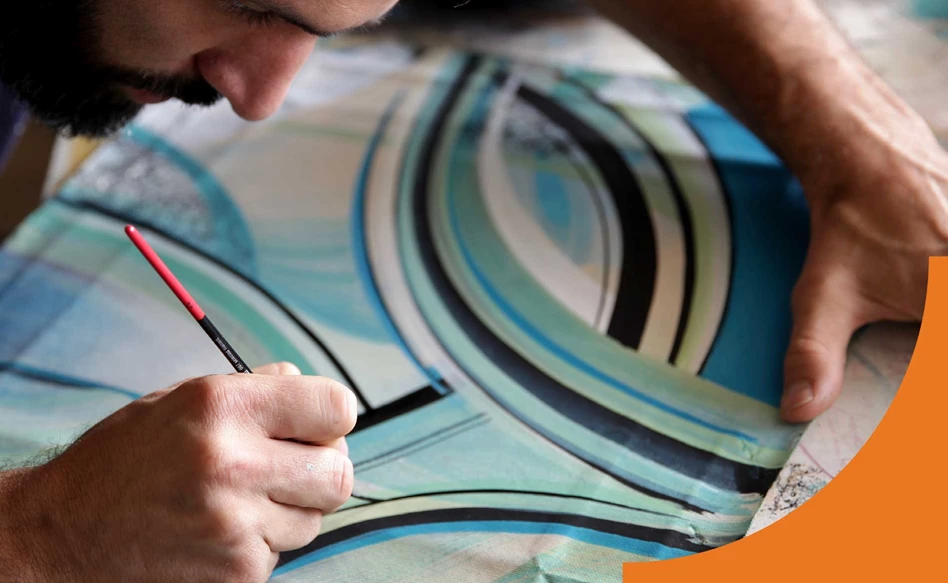
Acrylic paper - the basics
Acrylic paper is widely used when working on location and for experimenting with new applications. Carrying paper is a lot easier than carrying a canvas, and working with paper also makes it possible to cut out sections, frame them or attach them to something else.
Acrylic paint contains water and as the acrylic paint dries, water evaporates from the paint, leaving you with less volume. To prevent the paper from warping during the drying process, acrylic paper usually has a high grammage.
Acrylic paper can also incorporate different structures. Some acrylic paper has a canvas structure, while other acrylic paper has a fine or medium structure. A fine structure is more suitable for detailed work and fine lines. Acrylic paper is suitable for any acrylic-based product.
How to use
A block of acrylic paper is easy to take along with you, and your work can also be easily stored afterwards. You can paint on paper in the same way you do on canvas. If you would then like to hang your work on the wall, it can easily be framed.
Taking care of your paper
You can varnish acrylic paper. This is possible in the gloss level of your choice: matt, satin, glossy or high gloss.







